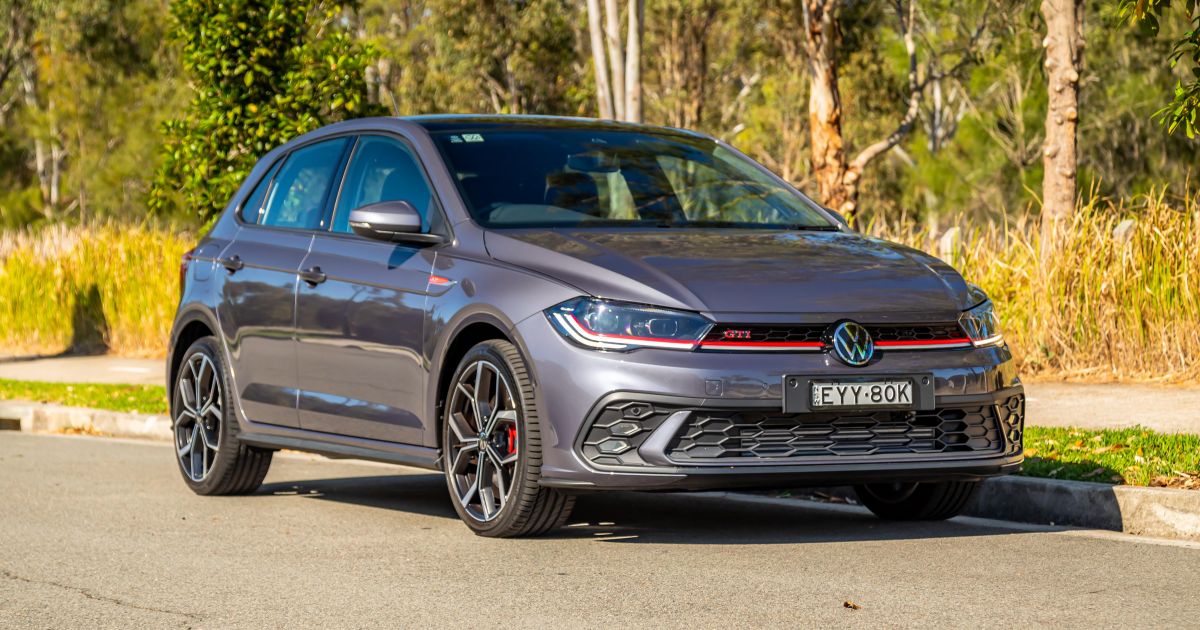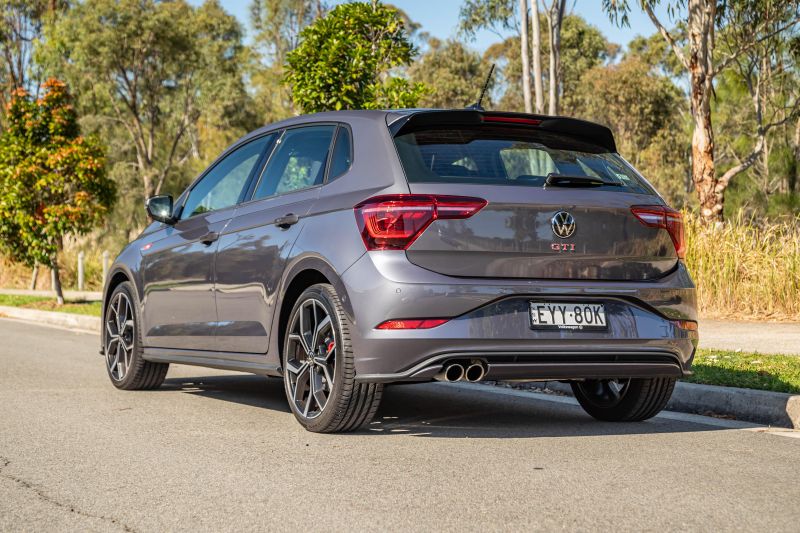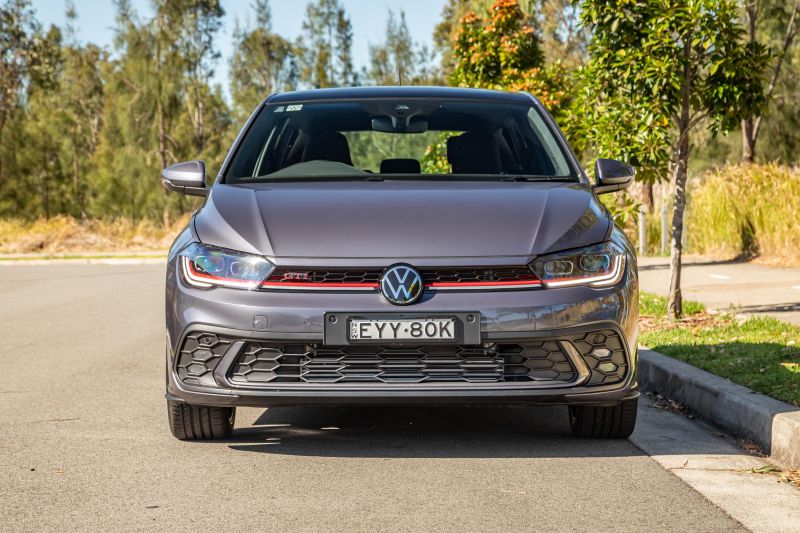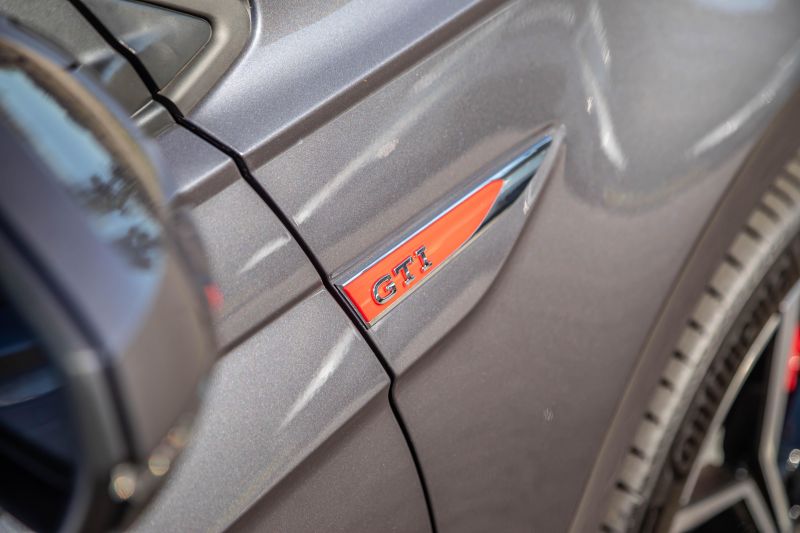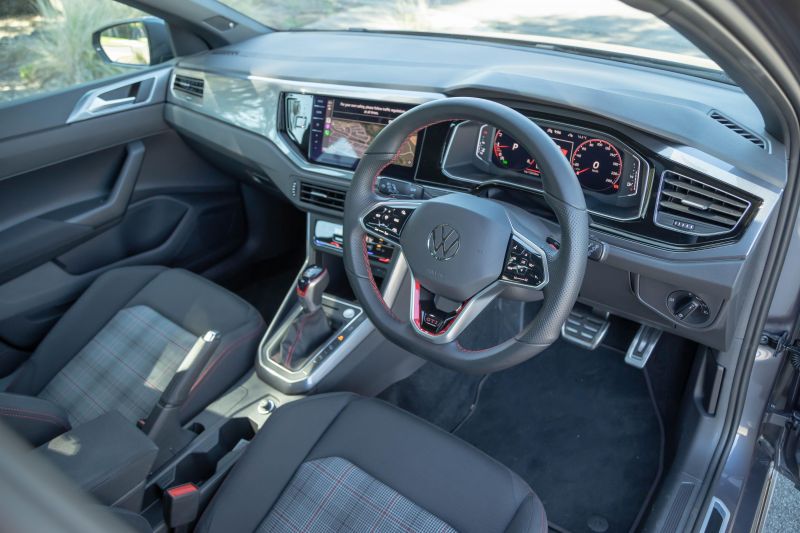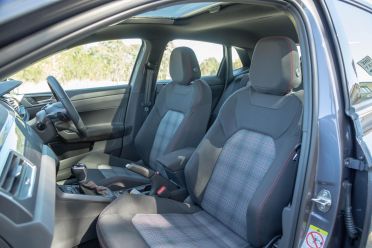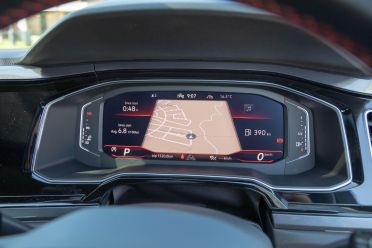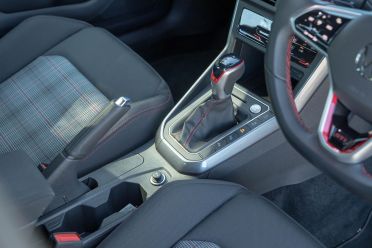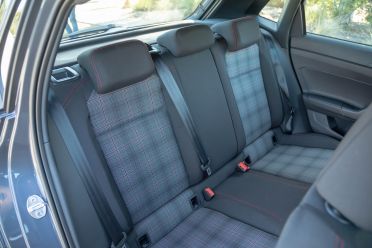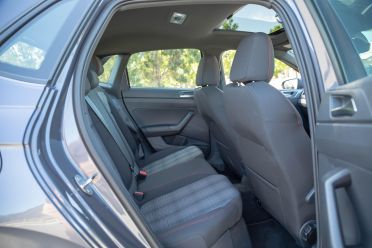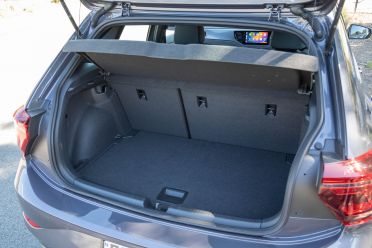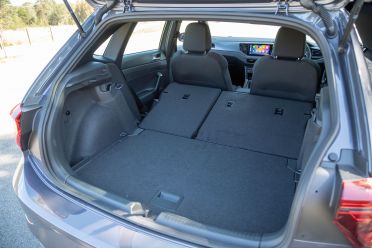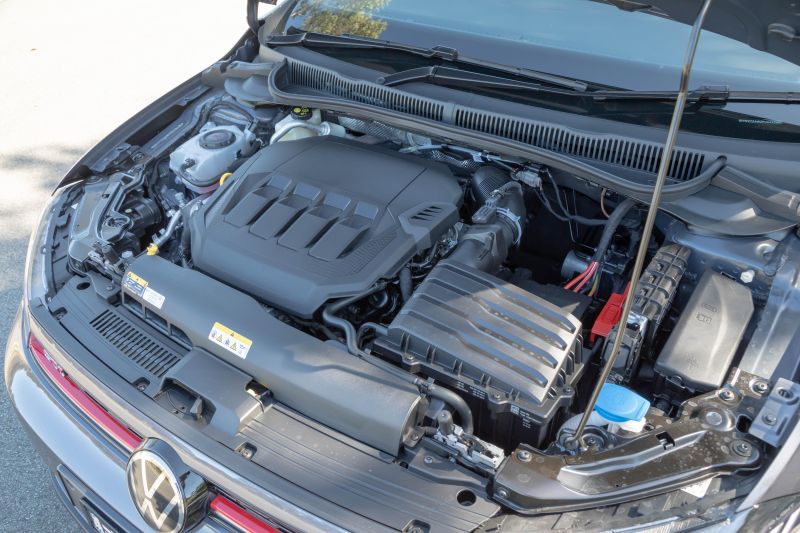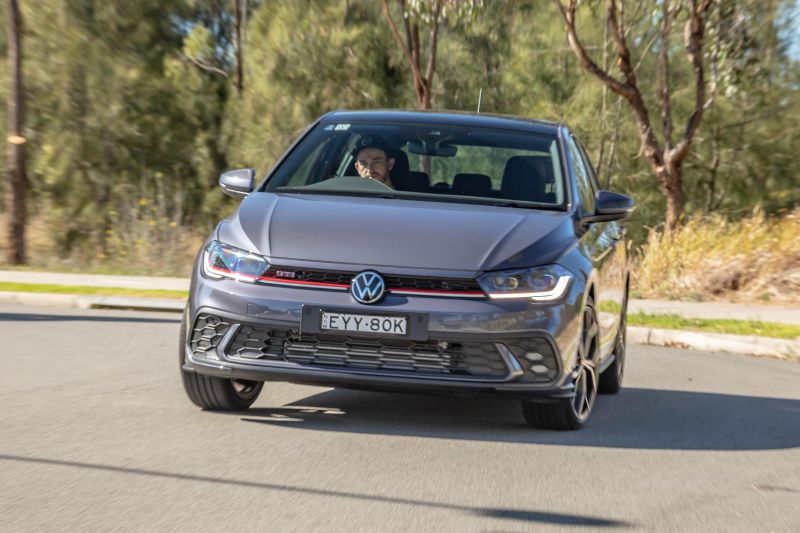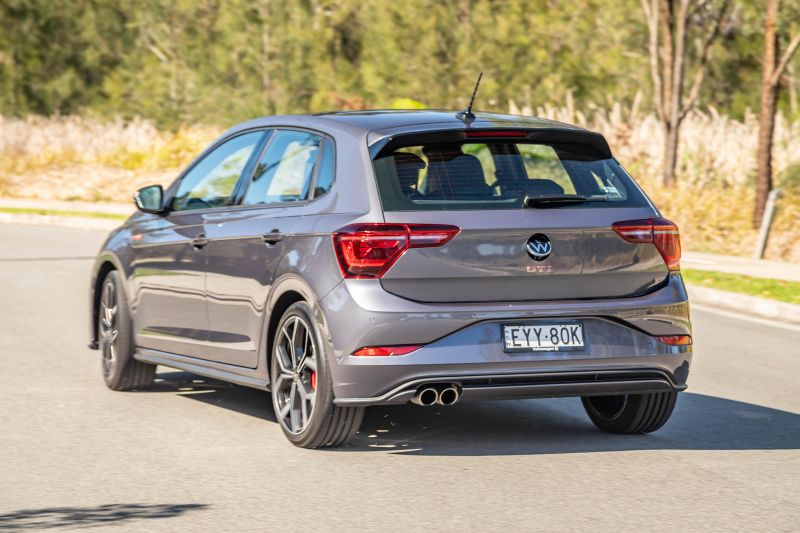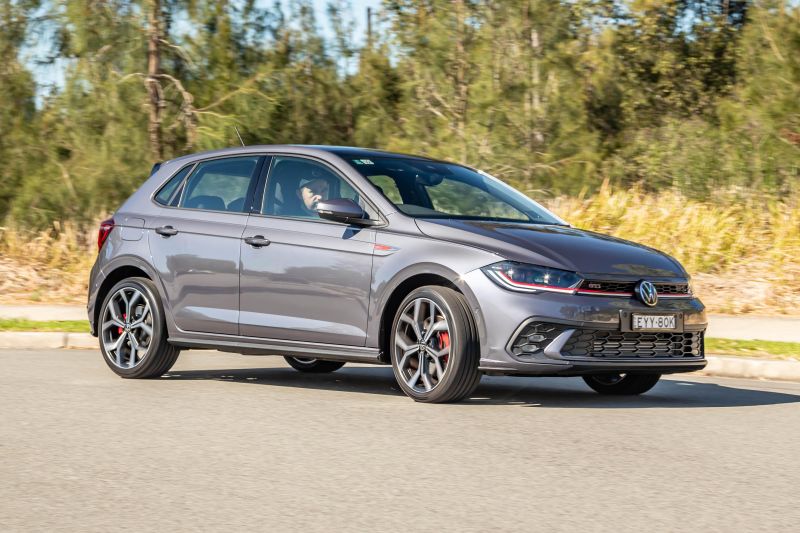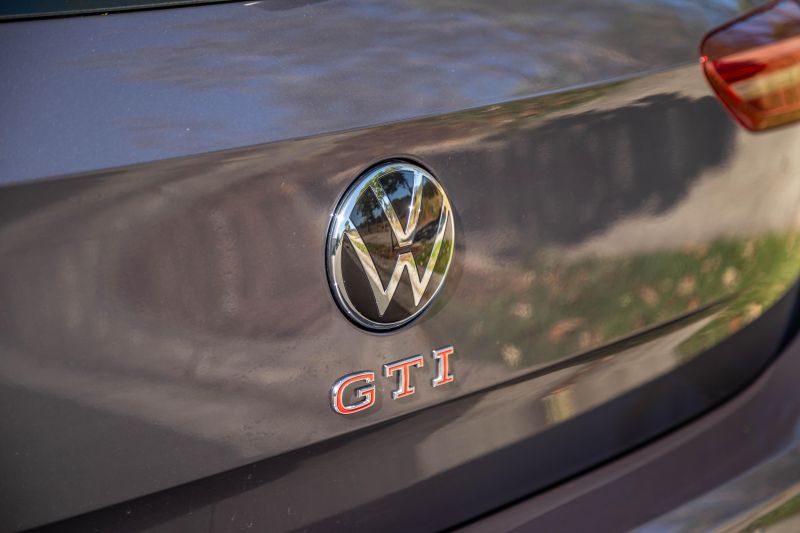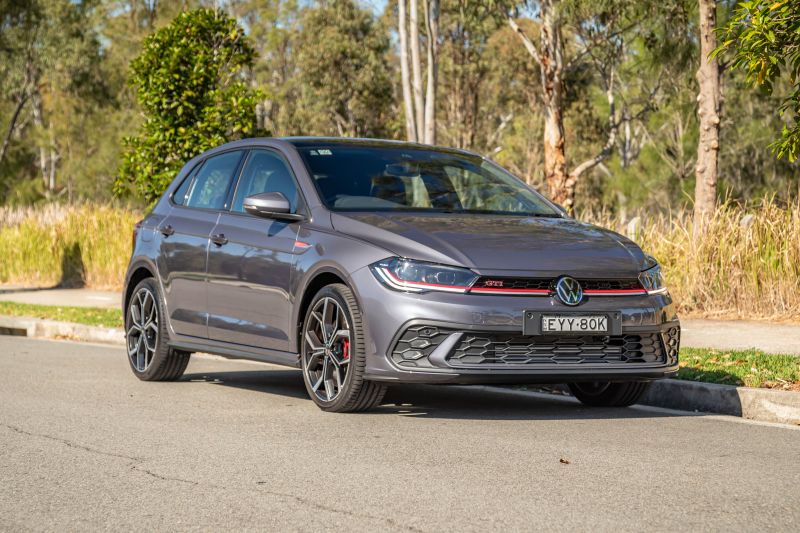The Volkswagen Polo GTI accounts for almost half of all Polo models sold in Australia. It’s easy to see why, once you’ve driven one.
That’s not to say that the regular Polo models aren’t good – just that the Polo GTI verges on outright greatness, with a terrific, charming drive experience that is more livable than you might think… well, for the most part.
With yet another price jump in recent times, though, it’s starting to get harder to justify the GTI if you’re after a budget-friendly hot-hatch, even if it does come across as a bargain alternative to the bigger Golf GTI.
How does the Volkswagen Polo fare vs its competitors?
View a detailed breakdown of the Volkswagen Polo against similarly sized vehicles.

Volkswagen
Polo
How much does the Volkswagen Polo GTI cost?
The Volkswagen Polo GTI is now $39,690 plus on-road costs. Yes, the market has shifted, and yes, rival cars have gotten more expensive, but this thing is now perilously close to the $40k mark. In fact it jumps well and truly over it when you consider the on-road costs.
Although it’s not cheap anymore, it is still a value-for-money machine, considering the standard equipment and the powertrain goodness on offer here.
There are bugger-all rivals for it, too, especially for this kind of cash.
I mean, you could consider a far less sporty Suzuki Swift Sport, which starts at $29,990 for the manual and $31,990 for the auto, but as fun as it is, it’d get hammered by this thing when it comes to pace.
You might want to consider a Hyundai i20 N, too, if you’ve got time to wait for one. The brand has had to pause orders on it a few times thanks to excess demand, probably because it comes across as a go-fast go-getter at $34,990.
It has more power than the Golf GTI, but less torque, yet still claims a lower 0-100 time (6.2 seconds) and is a bit more of an extrovert in the way it goes about things, too.
Then there’s the far more expensive Toyota GR Yaris (from $51,390 with a manual gearbox) and three doors only, which makes this car seem like a standout for someone who wants a far more liveable rig.
What is the Volkswagen Polo GTI like on the inside?
The trademark tartan trim is present, and I’m 100 per cent here for it.
I’ve always been a huge fan of the “Clark” tartan trim finish on the seats of the GTI, and I really like that they don’t have “GTI” embossed into them. They are more modest, which is what the brand’s more affordable hot-hatch is about, and as a result you can also forget about electric seat adjustment here – it’s an all manual job!
To me, that’s great, because it means you can tailor your seating position to the exact spot you like with the manual seatback recline roller. But if, like me, you have a big height disparity between yourself and your partner, you might find repeatedly adjusting the seat to that perfect spot quickly becomes tedious.
The interior finishes and trim look top notch. There is a nice leather steering wheel and gear selector, and there is nice red-finished stitching around the cabin, too. Oh, and you cannot miss the manual handbrake, which is a novelty in this day and age.
It is worth noting that this particular Polo GTI isn’t one of the newest ones, which will soon lose its annoying haptic buttons on the steering wheel. If you’re keen on one of these cars, I recommend waiting for the better, button-laden wheel.
There are soft finishes on the elbow pads up front, both the arm-rests on the doors and the centre console cover, but the toppers on the doors are hard, and so are some of the dash plastics.
This particular GTI had a few packs fitted, including the one that upgrades the media system from a smaller 8.0-inch touchscreen with knobs and dials, to a 9.2-inch unit with less-friendly buttons on the side. While the media system was mostly fine during my time with the car, it did – several times – fail to show the reversing camera view.
As for the climate control system, there’s a lower touch-capacitive screen with slider controls for the fan. This is better than it all being bundled into the top screen like in some newer VW products, but still not as good as tactile knobs and dials for quick changes on the move.
There are octagonal cup holders between the seats (I can’t recall the last time I had an octagonal take-away coffee…) and the bottle holders in the doors don’t have the lovely flocked lining you get in some more expensive VWs.
So, it does have a few cheaper elements compared to a Golf, but the biggest compromise is in the back.
If you need Golf levels of space and amenity, you need to buy a Golf. The Polo has less room, and less nice stuff for those in the back, too.
You don’t get a flip-down armrest with cupholders, and nor are there directional air vents fitted. My daughter was a backseat rider on a warmer-than-average October day during this test, and she got hot and bothered after about 20 minutes. And yes, shockingly, I had to resort to winding down the windows!
Further, the door armrests are of the hard plastic variety, meaning you might end up with sore elbows after a while in the back.
At least there are twin USB-C ports in the back, and a pair of map pockets. But just like the front seats, you miss out on flocked door pockets, though they are large enough to hold a smaller bottle.
It’s not abundantly roomy, either. Sitting behind my own driving position (at 182cm / 6’0” tall), my knees were hard up against the seat ahead, and it was pretty cramped generally.
Two smaller occupants might fit okay, but three across might not be feasible. There’s a big transmission tunnel intrusion limiting foot space too.
I guess you should consider this a car for those in the driver’s seat anyway.
The boot is decent but not exceptional for this size of car. And you need to know that the Polo GTI has a smaller boot capacity than other Polo models, as it doesn’t feature the flexible boot floor due to stereo components under the false floor.
This means a 305L capacity, as opposed to 351L for the non-sporty Polo. There is a space- and weight-saving spare wheel under that boot floor, though.
What’s under the bonnet?
The 2.0-litre turbo-petrol, front-wheel drive formula runs true here. It makes sense and it nails the brief.
The EA888 engine is a four-cylinder petrol, with 147kW of power (4400-6000rpm) and 320Nm of torque (1450-4400rpm). While those might not seem extraordinarily big numbers the car weighs just 1326kg (tare), so it has a very strong power-to-weight ratio.
Indeed, Volkswagen claims a 0-100km/h sprint time of only 6.8 seconds. Might seem slow in the electric ‘everything is super fast’ era, but it’s more fun than any EV in the bends.
How does the Volkswagen Polo GTI drive?
You buy a GTI because it drives like a GTI, right?
There are going to be some customers out there who just want the sportiest looking Polo, or the most expensive one, but they will be outnumbered by those who like how it drives. The main point of a GTI is that it possesses a cheeky driving character that is fun, fast, and frankly, ready to be ‘chucked around’ a bit.
Yes, the Polo GTI does some of its best work when you are chucking it around on twisty roads. Here you can make the most of its taut chassis setup, and wrestle the lovely, grippy leather steering wheel as you push from corner to corner, your grin growing as your confidence does.
The GTI is much more fun than a standard Polo, of course, but it’s also a more refined kind of fun than either an i20 N or a GR Yaris. It’s not as lairy, not as loud, not as ludicrous…. And that’s why it’s so good.
The 2.0-litre turbo-petrol engine is urgent, zesty and encouraging, with ample pulling power and is a sweet combination with the DSG auto, which offers super snappy shifts at speed, especially in the most assertive drive mode.
What’s really great is that the current model is much better at dealing with the roads that aren’t as fun. Sure, there’s still a tiny bit of lag at times from a standstill, especially if the engine’s start-stop technology is active.
But it is predictable enough in the way it moves in traffic and from a standing start, that even people who’ve had no experience with a dual-clutch transmission before, will be able to get to grips with it after just a few minutes of driving.
There are Normal, Sport, Eco and Individual settings for the driving mode profiles. The latter means you can tailor the car’s suspension and steering to be a bit more forgiving in urban driving over imperfect surfaces, while you still have the full gusto of the powertrain, if you prefer it that way.
And it does a pretty decent job of dealing with lumps and bumps in the road, with a firmness that offers a level of surety to the driver, while also limiting complaints from passengers.
Over a week of testing I came away thinking that this might not be quite as composed or cosseting as a Golf GTI is in the daily drudgery of driving duties, but it still manages to do what that car does well – and that is to combine a sporty drive with great liveability.
Except for the bit with the reversing camera failing, which was really annoying (and yes, I can park without a camera, it’s just that you don’t realise how much you like seeing behind your car until you can’t see anywhere near as much as usual).
Also frustrating for commuters like me is the amount of road noise intrusion on coarse-chip surfaces. For any Sydneysiders who travel the M4, there are a few patches along there that proved very challenging in this car, and if you live in a place where there are rougher road surfaces make sure you try and test drive on those roads.
This applies if you’re considering a Polo GTI – or any new car!
What do you get?
Polo GTI highlights:
- IQ.Light Matrix LED headlights
- LED daytime running lights with grille light
- LED tail-lights with dynamic indicators
- GTI body trim and metallic paint
- Adaptive suspension, drive mode selection
- 18-inch alloy wheels
- Tartan interior trim
- Alarm system
- Keyless entry and start
- 10.25-inch digital instruments
- 8.0-inch touchscreen infotainment system
- Wired Apple CarPlay and Android Auto
- DAB+ digital radio
- Wireless phone charging
- Parking sensors, front and rear
- Reversing camera
- Voice control
- Sport seats
- Sport steering wheel and paddles
The Sound & Tech package ($1500) brings a 9.2-inch infotainment system with satellite navigation, and the same six-speaker Beats sound system as the Style. There’s also an optional panoramic sunroof for $1650.
Is the Volkswagen Polo GTI safe?
The Volkswagen Polo GTI managed the maximum five-star ANCAP safety rating based on 2022 testing.
According to ANCAP, the Polo range achieved 94 per cent for adult occupant protection, 80 per cent for child occupant protection, and 70 per cent for both vulnerable road user protection and safety assist.
Standard safety equipment includes:
- AEB with Pedestrian, Cyclist detection
- Lane-keep assist
- Blind-spot monitoring
- Rear cross-traffic alert
- Proactive occupant protection
- Tightens the seatbelts, closes the windows, and shuts the sunroof when an imminent collision is detected
- Reversing camera
- Front, rear parking sensors
- Driver fatigue detection
- Adaptive cruise control with stop/go function
- Speed limiter for cruise control
- Passenger-side mirror tilt when reversing
- Travel Assist
- Can steer and stop/start the car in traffic situations
- Park Assist
- Semi-autonomous parking in parallel and 90-degree spots
The Polo has seven airbags fitted, including dual-front, front-side, front-centre, and curtain airbags for both rows.
How much does the Volkswagen Polo GTI cost to run?
VW covers its range with a five-year, unlimited kilometre warranty in Australia.
There’s also a couple of ways to cut the cake when it comes to servicing and maintenance. You can either pay as you go, or save some cash and choose a Care Plan, which is available as either a three-year/45,000km package at $1450, or a five-year/75,000km plan for $2900.
Those two options represent savings of up to $205 and $836, respectively, and you can pass it on to the next owner if you decide to change cars before the plan is up. That’s a nice resale bonus. And did you know that if you service your car with VW, you can get up to 10 years of roadside assistance included, too? Nice.
Volkswagen Australia’s official combined cycle fuel consumption figure for the Polo GTI is 6.5 litres per 100 kilometres, and I didn’t see too much higher than that in my real-world testing, just 7.3L/100km. Impressive, considering it did include some enthusiastic stints.
CarExpert’s Take on the Volkswagen Polo GTI
It’s hard not to like the Volkswagen Polo GTI: it’s a fun little car.
The GTI is probably better suited to singles and couples who like to drive and want to do more of it; or, if you also have a larger family car the GTI would be great as a special second car just for just you.
The price point is creeping up, and it doesn’t necessarily feel like the cleverest way to spend $40K, but damn is it fun.
Click the images for the full gallery
BUY: Volkswagen Polo
MORE: Everything Volkswagen Polo

